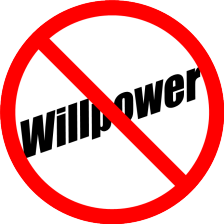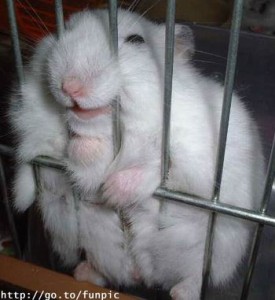I don’t believe in diets. I mean, I know they exist, it’s not the same as saying I don’t believe in unicorns and Bigfoot. But I don’t believe they work. I could pull up all kinds of statistics to back that up, but that’s just boring. And I have much better things to bore you with.
Like mice.
Have you ever seen a mouse counting calories? Of course not, they don’t have thumbs. Whenever they try to count they get to 8 then stop and look all confused. So if you want to put them on a diet you need to control the food yourself.
Which is a lot easier than controlling what people are eating. We’re just horrible at sticking to what the doctor tells us to eat. The only thing we’re worse at than eating what we’re supposed to is keeping track of what we actually ate.
From the Asian Food Information Center:
Surveys which require that people remember and self-report what they eat over a period of time are generally subject to error either because people simply don’t remember or are embarrassed to admit what they ate – or both.
And from Healthy Andy:
If you’ve read any of my other posts concerning scientific studies, you know my stance on the dubious nature of self-report. Simply put, PEOPLE LIE. They fib about everything. In fact, they even lie to themselves, when there’s nobody else looking!
But I was talking about mice, wasn’t I?
In a study published in the research journal Obesity researchers studied sets of mice to see what happened when you reduced the amount of food they ate. Now since we all know that the only way to lose weight is to eat less and exercise, we know that when you feed them less the mice must lose weight, right? Right?
Well … no. What actually happened was their weight was pretty much unchanged, but they lost muscle mass and gained fat mass. You can follow that link above and read the report yourself, but that will be even more boring than what I’ve already written here. If you want a great summary check out Tom Noughton’s blog post where he summarizes the report.
Here comes the science-y part
So why did the mice convert lean muscle into fat when they got less food? Because metabolism works to keep us near an “ideal” weight. What that ideal weight is is controlled by lots of factors, but is probably strongly related to insulin. (What, you already knew that? Congratulations, you’ve heard of Gary Taubes. But I’ll get to him in another post.)
When researchers reduced the food supply, the mousy metabolism reacted to the food shortage as though it were a famine. The best way to survive a food shortage is to store up as much energy as you can. And the way animals store energy is, you guessed it, fat.
That’s why calorie-restriction diets always plateau after a few weeks. Your body has recognized the food shortage and started squirreling away everything you eat into your fat cells. Your metabolism is waiting for the end of the famine.
If I’m not supposed to eat less …
Then how do you lose weight? Eat more?
Come on, things aren’t so black and white. What you’re supposed to do is eat enough that you’re not hungry, then stop. How you get to “not hungry” still has some wiggle room though. Let’s tighten that up.
You should eat foods that satisfy both your taste buds and your metabolism. Shortchange either one of them and you’ll have cravings. Which means you’ll need willpower to resist the cravings. And remember, we don’t have willpower.
Lucky for me there’s something delicious that also satisfies my metabolism: Steak. And pork, and chicken, but let’s keep this simple for now. Eat an eight-ounce ribeye for lunch and I’m not standing in front of the snack machine at 4:00 trying to make it to dinner time without gnawing my left hand off.
Don’t give me that look, it’s not as expensive as you think. (Or was it the gnawing-my-hand-off thing that bothers you?)
Let’s say it’s $7 / pound. That 8-ounce steak costs about $3.50. Add a few carrots and a half-can of black beans and that’s about $5. You can’t get a Whopper combo for $5 any more.
Tell me again how this is expensive?
Bottom line
If you’re hungry, your metabolism is going to tell your body to store up fat until there’s food available again. The quickest way to get to not-hungry with the least food is to eat all the high-fat, high-protein foods you’re told to avoid on all the calorie-restriction diets.
So have a steak. It’s good for your waistline. As Charlie would say: Winning!

